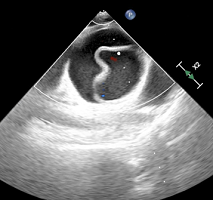Current media broadcasts have been reporting about the rapidly spreading outbreaks of the Zika virus now identified in South and Central America, as well as Mexico, the Caribbean, Puerto Rico and now in the United States. Focal activity of the Aedes species mosquito that transmits the Zika virus to humans through its bite, has been reported in South Florida. Prior to 2007, Zika was not reported outside of Africa and Asia, but since it was discovered recently in Brazil in 2015, the virus has swiftly spread across several continents.
Zika is transmitted to humans by an infected mosquito bite during a blood meal by the Aedes species. They are also responsible for the transmission of dengue fever and chikungunya viruses. Unlike other species of mosquitos, the Aedes mosquitos often hide indoors and in shaded areas and are aggressive daytime biters, thus making it very challenging to prevent the spread of infections.1 Transmission occurs perinatally, in utero, sexual contact, blood transfusions and bodily fluids. To date, transmission through breastfeeding has not been reported, but limited studies are available, therefore absolute conclusions about modes of transmission cannot be determined at this time.2
Only about 1 in 5 people infected with Zika virus are symptomatic. In people who do experience symptoms, they will occur between 3 and 12 days after being bitten by an infected mosquito and will last between 2 and 7 days. The most common symptoms are fever, maculopapular rash, headache, arthralgia, non-purulent conjunctivitis, myalgia, retro-orbital pain and vomiting.3 Severe disease requiring hospitalization are uncommon. As in the case of other viral illnesses, once infected, individuals are protected from future infection.
Much focus has been on women that contract the Zika virus while pregnant. The Zika virus has been linked to microcephaly in newborns born to those infected. Microcephaly is a neurologic condition in which the newborn’s head is smaller and the result of abnormal brain development in utero. In addition to microcephaly, there is some evidence that the Zika virus is also linked to miscarriage and stillbirth.4
Testing for Zika currently involves blood and urine specimens. Polymerase chain reaction (PCR) can be used to detect viral ribonucleic acid (RNA) in serum and urine during the first week of illness and in urine alone for samples collected 1 to 3 weeks after illness onset. Both Zika virus PCR and antibody testing are commercially available.
Healthcare professionals play a key role in disseminating information to the public and must remain up-to-date with Centers for Disease Control and Prevention (CDC) and World Health Organization (WHO) recommendations. Clinicians should be educated about the hallmark signs and symptoms of Zika virus and advise their clients about precautions to take. Pregnant women should protect themselves from mosquitoes and avoid traveling to regions where Zika virus is present. In addition, men who travel to infected areas should use condoms to protect their sexual partners. The use of Environmental Protection Agency (EPA) registered insect repellant can help prevent mosquito bites in all people.
The CDC has released clinical guidelines for the evaluation, clinical manifestations, diagnosis, and treatment of the Zika virus for all professionals. As it currently stands, there is no vaccine or prophylactic treatment available, but the first vaccine is in the pipeline.2 Healthcare professionals should educate their clients on infection control, personal protection, and prevention against this illness. These simple precautions may help prevent people from contracting the virus as well as the potential birth defects that could result.








